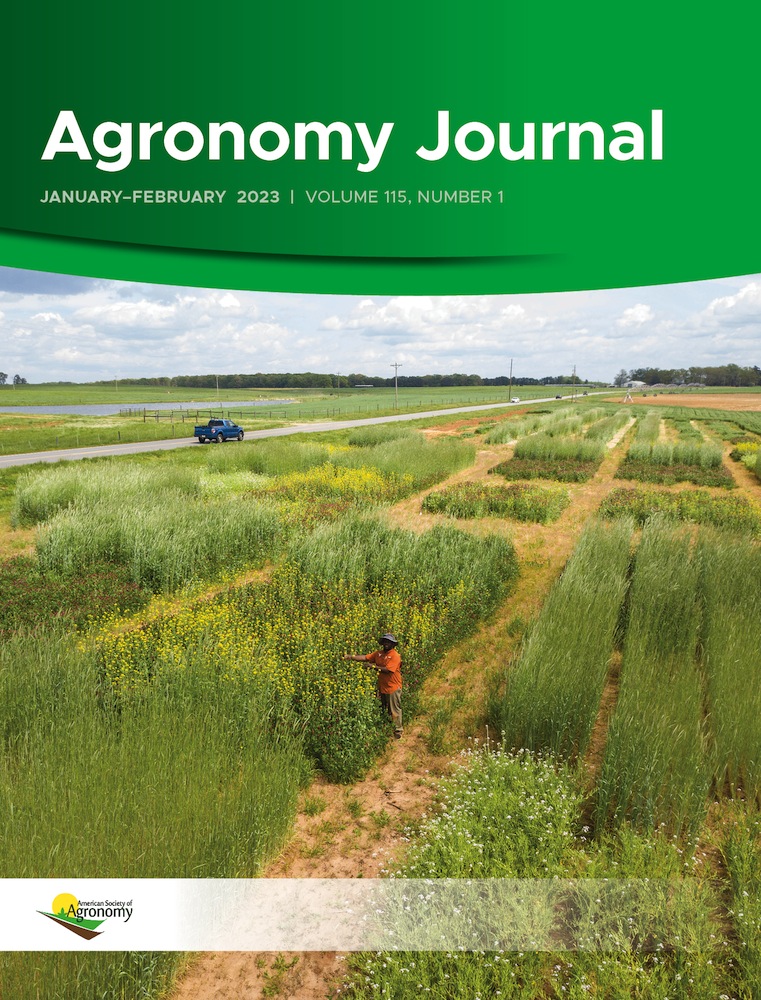Ver ítem
- xmlui.general.dspace_homeCentros Regionales y EEAsCentro Regional Santa FeEEA ReconquistaArtículos científicosxmlui.ArtifactBrowser.ItemViewer.trail
- Inicio
- Centros Regionales y EEAs
- Centro Regional Santa Fe
- EEA Reconquista
- Artículos científicos
- Ver ítem
Delayed harvest time affects strength and color parameters in cotton fiber
Resumen
Cotton (Gossypium hirsutum L.) is the most widely used natural fiber worldwide in the textile industry, thus maintaining or even improving fiber quality is essential to produce the best quality yarn and uniform fabrics. Final fiber quality properties are determined not only by genotypes or environmental conditions during crop development but can also be affected by other post-maturity factors, such as harvesting and ginning methods, and harvest time. The
[ver mas...]
Cotton (Gossypium hirsutum L.) is the most widely used natural fiber worldwide in the textile industry, thus maintaining or even improving fiber quality is essential to produce the best quality yarn and uniform fabrics. Final fiber quality properties are determined not only by genotypes or environmental conditions during crop development but can also be affected by other post-maturity factors, such as harvesting and ginning methods, and harvest time. The aim of this study is to associate the different environmental factors that affect specific lint quality traits produced by a delay in harvest time, also assessing cultivar effect. This field study included 4 cotton cultivars evaluated at 7 different harvest times (manual harvested) for different quality parameters. Results indicate that prolonged exposure of cotton fiber to the environment affects lint percentage (LP), strength (Str), reflectance (Rd) and yellowness (+b). Str showed a decrease of 0.02 g tex−1 per day from defoliant application, while LP, Rd and +b presented different rates according to the season. No differences were obtained neither for length nor for fineness and maturity (micronaire) traits. In addition, the analysis of the results together with the climatic data recorded during the experiments indicated a negative correlation between Str, Rd, and +b with the number of rainy days, accumulated precipitation, and frost temperatures. Overall, this study establishes specific relationships between certain fiber characteristics and environmental conditions, being an important tool for crop management with regards to climate predictions that could help to make estimates of economic losses when the harvest is delayed.
[Cerrar]

Fuente
Agronomy Journal : 1-26 (First published: 27 January 2023)
Fecha
2023-01
Editorial
Wiley
ISSN
0002-1962
1435-0645
1435-0645
Formato
pdf
Tipo de documento
artículo
Palabras Claves
Derechos de acceso
Abierto
 Excepto donde se diga explicitamente, este item se publica bajo la siguiente descripción: Creative Commons Attribution-NonCommercial-ShareAlike 2.5 Unported (CC BY-NC-SA 2.5)
Excepto donde se diga explicitamente, este item se publica bajo la siguiente descripción: Creative Commons Attribution-NonCommercial-ShareAlike 2.5 Unported (CC BY-NC-SA 2.5)


